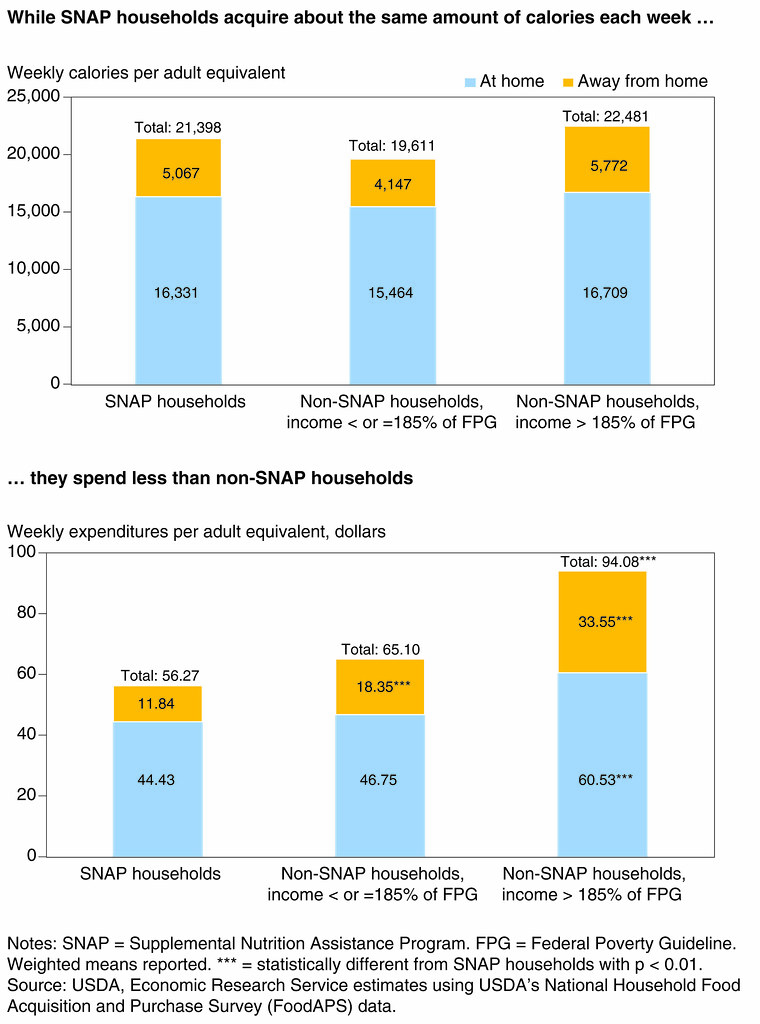
Households can have similar food needs, but often have different budgets with which to meet them. These budget differences may help explain observed differences in food spending and diet quality. A new report from USDA’s Economic Research Service digs into this issue using household level data from USDA’s National Household Food Acquisition and Purchase Survey (FoodAPS) to estimate the number of calories acquired and the amount of money spent to get them.
In Nutritional Quality of Foods Acquired by Americans: Findings from USDA’s National Household Food Acquisitions and Purchase Survey, we found that households participating in USDA’s Supplemental Nutrition Assistance Program (SNAP) spent significantly less than higher income non-SNAP households, roughly $38 less per adult equivalent per week, and $9 less than low-income non-SNAP households, although this difference was not statistically significant.
In the study, we divided households into three groups: households participating in SNAP, low-income non-SNAP households, and higher-income non-SNAP households. We calculated the total number of calories in the foods purchased and acquired for free (for example, meals with family or friends) for all household members over the one-week survey. Because households of different sizes and composition may differ in their calorie needs, we calculated total calories per “adult equivalent,” that is, the 2,000 calorie-per-day standard commonly used for nutrition labeling of foods. We also estimated the amount paid for the purchased foods.
We found that, on average, calories per adult equivalent did not differ significantly among the three groups. SNAP households acquired about 200 more daily calories per adult equivalent than low-income non-SNAP households and about 200 fewer than higher income non-SNAP households.
But expenditures on food told a different story. Not only did SNAP households spend less overall, they devoted less of their food dollars to purchases from restaurants and other away-from-home sources, and instead relied more on school meals and family and friends. For at-home foods, SNAP households may have visited lower-priced stores or bought a different mix of foods to stretch their food budgets.
Like most Americans, the nutritional quality of SNAP participants’ acquisitions shows room for improvement. However, SNAP households differ from non-SNAP household in ways that may affect their food choices and nutritional quality. For example, SNAP households tend to have more children and are more likely to be headed by single parents than non-SNAP households. These challenges may further complicate the task of making healthy choices on a tight budget.



